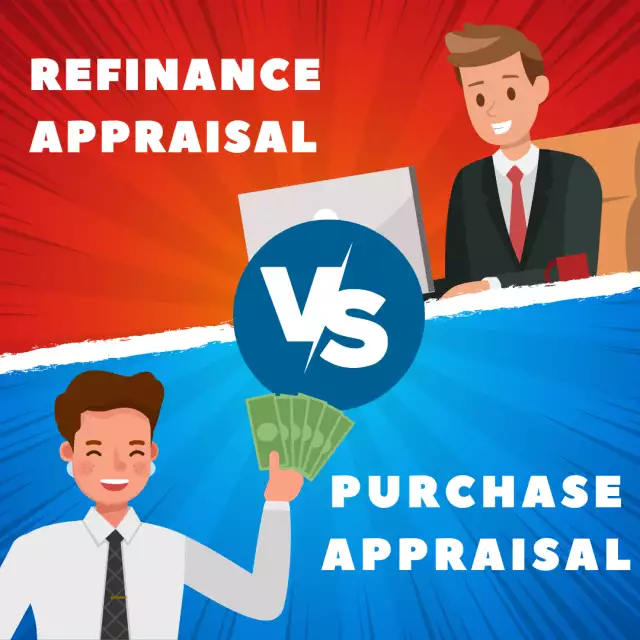Pre-qualification vs. Pre-approval: Understanding the Difference Before Starting the Home Buying Process
Pre-qualification vs. Pre-approval: Understanding the Difference Before Starting the Home Buying Process
Pre-qualification vs. Pre-approval: Understanding the Difference Before Starting the Home Buying Process
Purchasing a homeis a significant investment, and the home-buying processcan be overwhelming for first-time homebuyers. Before beginning the home-buying process, it is important to understand the difference between pre-qualification and pre-approval. While these terms may sound similar, they have distinct meanings and implications for borrowers. In this article, we will explore the differences between pre-qualification and pre-approval, why it is important to understand the difference, and factors to consider during the home-buying process.
Here is a brief table summarizing the differences between pre-qualification and pre-approval:
| Pre-Qualification | Pre-Approval | |
| Purpose | Estimate loan amount | Provide accurate loan estimate |
| Credit Check | No | Yes |
| Income Verification | No | Yes |
| Documentation | Limited | Thorough |
| Timeline | Minutes | Days to weeks |
| Loan Amount | Estimate only | More accurate estimate |
| Interest Rate | Estimate only | More accurate estimate |
| Approval Guarantee | No | No |
Definition and Explanation
Pre-qualification and pre-approval are terms used by lenders to evaluate a borrower's ability to qualify for a mortgage. Pre-qualification is a preliminary assessment of a borrower's creditworthiness, while pre-approval is a more in-depth evaluation of a borrower's credit and financial status. Pre-qualification is a simple process that involves providing basic information about your income, debts, and assets to a lender. Based on this information, the lender will provide an estimate of the amount you may be able to borrow. Pre-qualification is not a guarantee of loan approval, and it does not require a credit check or a thorough examination of your financial history. On the other hand, pre-approval is a more rigorous evaluation of your credit and financial status. To obtain pre-approval, you will need to complete a mortgage application and provide documentation such as tax returns, bank statements, and pay stubs. The lender will review your credit score, debt-to-income ratio, and other factors to determine your eligibility for a loan. Pre-approval is a more comprehensive assessment of your creditworthiness and provides a more accurate estimate of the loan amount you may qualify for.
Importance of Understanding the Difference
It is important for borrowers to understand the difference between pre-qualification and pre-approval before starting the home-buying process. While pre-qualification provides a quick estimate of your borrowing capacity, pre-approval gives a more accurate assessment of your creditworthiness and the loan amount you may qualify for. Understanding the difference between these two processes can help you make informed decisions about your home-buying options. One common misconception about pre-qualification and pre-approval is that they are interchangeable. However, they are not the same, and confusion between the two can lead to misunderstandings and missteps during the home-buying process. For example, a borrower may make an offer on a home based on a pre-qualification estimate, only to find out later that they do not qualify for the loan amount needed to purchase the home.
Factors Considered in Pre-Qualification and Pre-Approval
Several factors are considered in pre-qualification and pre-approval, including income, debts, assets, and credit history. During pre-qualification, a lender will review your income and debt levels to determine your debt-to-income ratio (DTI). This is an important factor in determining the loan amount you may qualify for. A lower DTI indicates that you have more income available to cover your debts, making you a lower-risk borrower. Pre-approval involves a more thorough examination of your credit history and financial status. The lender will review your credit report and score, employment history, income, and assets. They will also consider other factors such as your debt-to-income ratio, the loan-to-value ratio (LTV), and any outstanding debts or judgments against you. The lender will use this information to determine your eligibility for a loan and the interest rate you may qualify for.
How Pre-Qualification and Pre-Approval Affect Loan Amount and Interest Rates
Pre-qualification and pre-approval can affect the loan amount you may qualify for and the interest rate you may be offered. During pre-qualification, the lender will provide an estimate of the loan amount you may be able to borrow based on the information you provide. However, this estimate is not a guarantee of loan approval, and the actual loan amount may differ depending on the results of a more thorough evaluation of your creditworthiness. Pre-approval provides a more accurate assessment of the loan amount you may qualify for. Since pre-approval involves a more thorough evaluation of your credit and financial status, the lender can provide a more accurate estimate of the loan amount you may be able to borrow. This can help you set a realistic budget for your home search and avoid disappointment later on. Similarly, pre-qualification and pre-approval can affect the interest rate you may be offered. A lower credit score or higher DTI can result in a higher interest rate, making your mortgage payments higher. During pre-approval, the lender will review your credit score and financial history to determine your creditworthiness and the interest rate you may be offered. A higher credit score and lower DTI can result in a lower interest rate, making your mortgage payments more affordable.
Other Considerations
In addition to pre-qualification and pre-approval, there are several other important considerations during the home-buying process. One important factor is your credit score. Your credit score plays a significant role in your ability to qualify for a mortgage and the interest rateyou may be offered. It is important to review your credit report and score before applying for a mortgage to identify any errors or issues that may affect your creditworthiness. Another important consideration is the timeline for pre-qualification and pre-approval. Pre-qualification can be completed quickly, often within a few minutes, while pre-approval can take several days to several weeks to complete. If you are in a hurry to purchase a home, pre-qualification may be a good option to get a quick estimate of your borrowing capacity. However, if you have more time, pre-approval can provide a more accurate assessment of your creditworthiness and loan amount. Finally, it is important to consider the potential drawbacks of pre-qualification and pre-approval. While pre-qualification and pre-approval can be helpful in the home-buying process, they are not guarantees of loan approval. If your financial situation changes or if there are issues with the property, the lender may not approve your loan application, even if you have been pre-qualified or pre-approved. It is important to have a backup plan in case your loan application is not approved.
Conclusion
In conclusion, pre-qualification, and pre-approval are important steps in the home-buying process. Understanding the difference between these two processes can help you make informed decisions about your home-buying options and avoid disappointment later on. It is important to consider factors such as your income, debts, assets, credit history, and credit score when applying for pre-qualification or pre-approval. Additionally, it is important to consider the potential drawbacks of pre-qualification and pre-approval and have a backup plan in case your loan application is not approved. By understanding the difference between pre-qualification and pre-approval and considering all factors, you can make the home-buying process less stressful and more successful.





